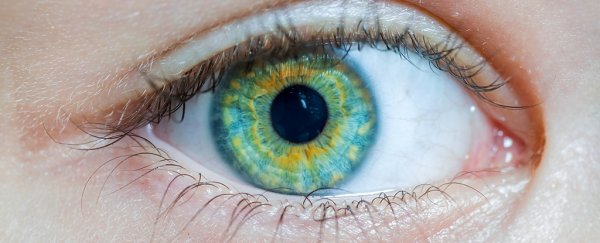For many people with autism, avoiding eye contact isn't a sign that they don't care – instead, it's a response to a deeply uncomfortable sensation.
Researchers have discovered a part of the brain responsible for helping newborns turn towards familiar faces is abnormally activated among those on the autism spectrum, suggesting therapies that force eye contact could inadvertently be inducing anxiety.
Autism spectrum disorder is a term used to describe a variety of conditions that make communicating and socialising a challenge, and is often accompanied by restricted and repetitive behaviours.
A defining characteristic of autism spectrum disorder is a difficulty in making or maintaining eye contact, a behaviour that not only makes social interactions harder, but can lead to miscommunication among cultures where eye contact is taken as a sign of trust and respect.
Those with the condition typically claim it feels "unnatural" or express anxiety over making eye contact, but psychologists have been uncertain if the discomfort is sensory or stems from conflict over the social importance of looking a person in the eye when you communicate.
Previous research suggested the latter, but a team of neurologists from the Massachusetts General Hospital in the US suspected the problem might be over-sensitivity of the parts of the brain responsible for emotional perception.
In part, they were persuaded to search for a neurological cause by reports from those diagnosed with the condition, who claimed looking into the eyes of others was stressful, that it "feels yucky", or even that "it can actually make my eyes burn or water while doing it."
Specifically, the researchers looked to a part of the brain called the subcortical system, a variety of structures that integrates information from the outer cortex with the peripheral senses to give rise to movements and other behaviours.
Within this system are pathways that carry visual information from the eyes to parts of the brain that stimulate emotions, and helps newborn babies recognise and turn to familiar faces and influence a range of other social actions.
Previous research on whether this part of the brain was overactive in people with ASD produced mixed results, possibly over confusion whether subjects actually looked at the eyes in the faces used in the studies.
To address this conflict, the researchers used functional magnetic resonance imaging (fMRI) to measure differences in the activation of the parts of the subcortical system responsible for processing faces in 23 adult and child volunteers with ASD and 20 controls.
The participants all received scans as they watched two versions of clips of faces displaying emotions such as fear, anger, or happiness; one normal, and another with a red cross between the eyes to attract attention.
While the face-recognition subcortical region was active in both groups, the areas were highly active in those with ASD when they were forced to focus around the eye region, especially when the faces expressed fear.
"The findings demonstrate that, contrary to what has been thought, the apparent lack of interpersonal interest among people with autism is not due to a lack of concern," says lead researcher Nouchine Hadjikhani.
"Rather, our results show that this behaviour is a way to decrease an unpleasant excessive arousal stemming from overactivation in a particular part of the brain."
The results are interesting, however shouldn't be overstated. For one thing, the researchers admit that without using eye-tracking technology they couldn't match the time spent looking at the eyes with the duration of overactivation in the subcortical system.
They also hadn't matched the subjective claims of uncomfortable sensations made by individuals with their particular brain activity, leaving room for doubt.
But the research is enough to force a rethink on the consequences of coercing children with autism to practice making eye contact.
"The findings indicate that forcing children with autism to look into someone's eyes in behavioural therapy may create a lot of anxiety for them," says Hadjikhani.
Instead, she suggests slow habituation towards eye contact could be a more appropriate way to handle eye contact in the long run without causing stress.
Understanding that eye contact can induce a physical discomfort and isn't simply a case of learning to fake it could also help others in society understand the cultural complexities of facial expressions, and accept not everybody is being shifty as they avoid meeting your gaze.
This research was published in Nature Scientific Reports.
